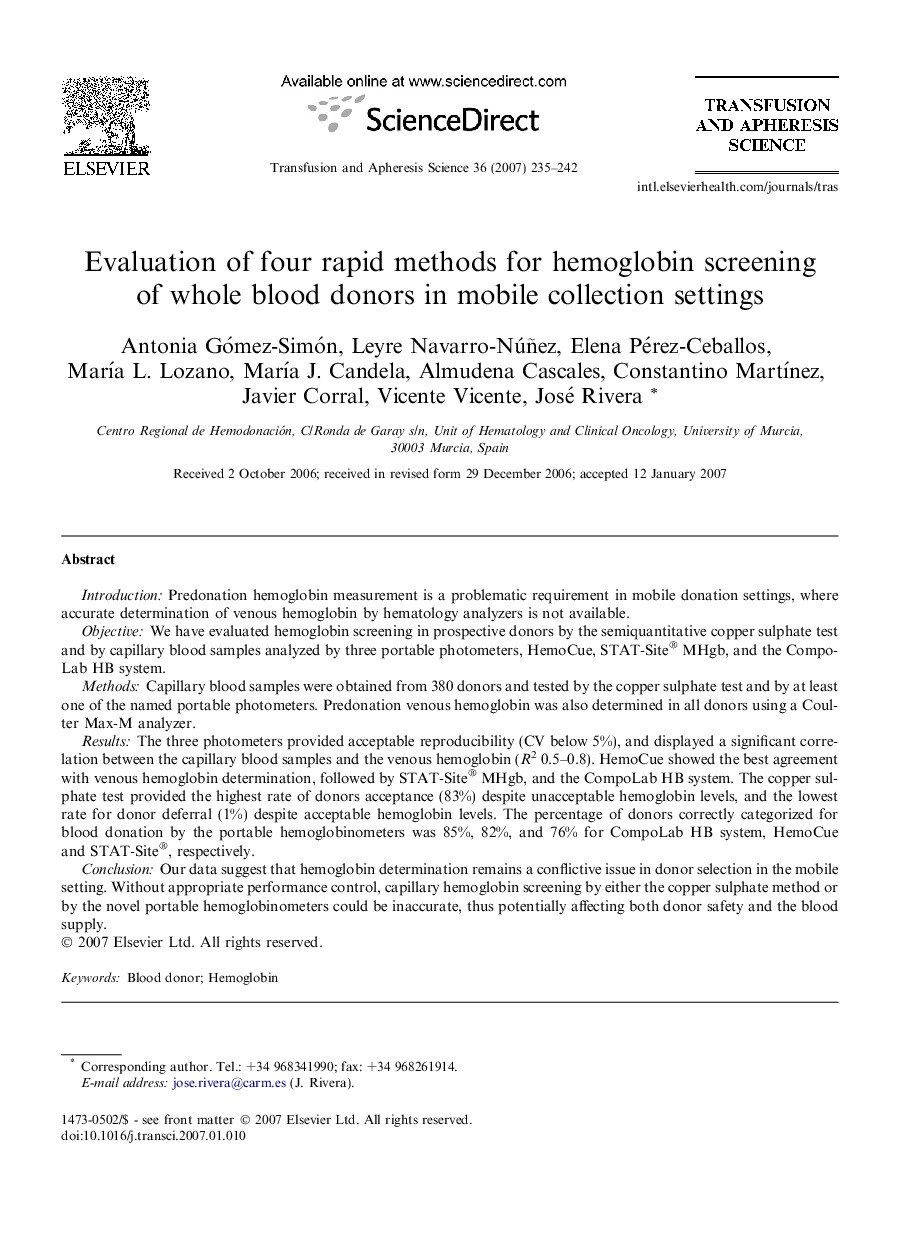| Article ID | Journal | Published Year | Pages | File Type |
|---|---|---|---|---|
| 3336198 | Transfusion and Apheresis Science | 2007 | 8 Pages |
IntroductionPredonation hemoglobin measurement is a problematic requirement in mobile donation settings, where accurate determination of venous hemoglobin by hematology analyzers is not available.ObjectiveWe have evaluated hemoglobin screening in prospective donors by the semiquantitative copper sulphate test and by capillary blood samples analyzed by three portable photometers, HemoCue, STAT-Site® MHgb, and the CompoLab HB system.MethodsCapillary blood samples were obtained from 380 donors and tested by the copper sulphate test and by at least one of the named portable photometers. Predonation venous hemoglobin was also determined in all donors using a Coulter Max-M analyzer.ResultsThe three photometers provided acceptable reproducibility (CV below 5%), and displayed a significant correlation between the capillary blood samples and the venous hemoglobin (R2 0.5–0.8). HemoCue showed the best agreement with venous hemoglobin determination, followed by STAT-Site® MHgb, and the CompoLab HB system. The copper sulphate test provided the highest rate of donors acceptance (83%) despite unacceptable hemoglobin levels, and the lowest rate for donor deferral (1%) despite acceptable hemoglobin levels. The percentage of donors correctly categorized for blood donation by the portable hemoglobinometers was 85%, 82%, and 76% for CompoLab HB system, HemoCue and STAT-Site®, respectively.ConclusionOur data suggest that hemoglobin determination remains a conflictive issue in donor selection in the mobile setting. Without appropriate performance control, capillary hemoglobin screening by either the copper sulphate method or by the novel portable hemoglobinometers could be inaccurate, thus potentially affecting both donor safety and the blood supply.
